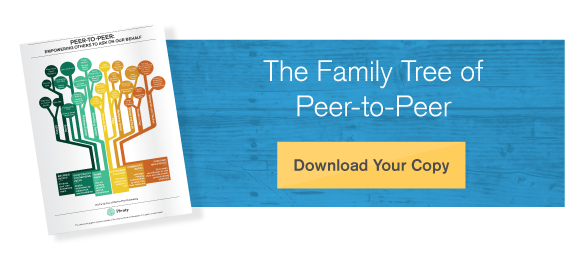It’s Not About The Ice Bucket: Understanding The Latest Peer-to-Peer Success Story
By now you have most likely seen your Facebook feed taken over by the latest peer-to-peer fundraising phenomenon known as the Ice Bucket Challenge. It was started by Pete Frates, 29, of Massachusetts, who has lived with ALS since 2012. Pete has been working with his local chapter of the ALS Association to spread awareness of Lou Gehrig’s Disease. The dynamics of the challenge are simple: You challenge three of your friends to record themselves pouring a bucket of ice water over their heads. If your friends do not accept the challenge within 24 hours, their penalty is to make a donation of $100 to the ALS Association. Ideally, your friends record themselves and make a donation – and then challenge their friends to do the same.
The concept has taken off, raising an estimated $4 million nationwide in the first two weeks alone, and that number only continues to grow. What clearly is working about this campaign, besides the unexpected windfall of revenue, is the viral nature of its peer-to-peer mechanics. Once you challenge your friends, they challenge their friends, and so on. For a cause that isn’t used to being a household topic of conversation, the sudden increase in awareness has to be a good thing, right?
What has also contributed to the success of the challenge is how it started: organically. Pete Frates is a young constituent with a direct connection to the cause and a story that breaks everyone’s heart. He put out a unique, specific ask and everyone in his world responded. Then, the power of peer-to-peer took over as those who accepted the challenge extended the challenge to others in their networks.
The space is now filling up with spin-offs of the same idea. Replace the ALS Association with organization X. Dunk yourself in a pool of ice water rather than dumping a bucket over the head. Give $50 rather than $100. Organize masses of people to do it together, don’t just do it alone. Create an online fundraising page and share the link rather than just filming it and posting it on social media. If the ALS Association can do it, why can’t everyone else?
Unfortunately, we doubt that it is going to be that simple. This won’t be the silver-bullet of impact for all that jump on the bandwagon. Pete put his own story in motion to a closely connected group of friends. The magic isn’t the ice bucket – the magic is a personal story of cause paired with a specific appeal for support. What has been a runaway success for the ALS Association may just be a fundraising gimmick for everyone else. Already, we have noticed that many ice-bathers’ messages about their connection to their preferred beneficiary is often boiled down to a single sentence that tells very little. Very few are actually telling a personal story about why the cause is compelling enough for them to publicly shock their bodies in the name of philanthropy. And that’s where we see the trouble.
The Frates family and Pete’s emotional story is what put the viral engine in motion. Like a pebble dropped in water, they created a ripple effect. While the ripples get broader as they spread, they also get weaker. That’s why organizations need to make sure that the initial pebble is as hefty as possible – it has to sustain a great deal of momentum.
When it is all said and done, there’s no question that the ALS Association has an opportunity to harness the impact of this success and sustain the ripples for a good while to come. Let’s look at the outcomes from the perspective of the ALS Association:
- We have hundreds of thousands of new names. Those who participated may or may not have a connection to ALS, but they have shown that given an ask that piques their interest they’ll take action and help spread the word. The caution here is to not assume these constituents want to deepen their engagement. Converting most of these people to regular donors may be difficult, but some may respond to other virtual events or local in-person events like happy hours and receptions. Use those events as opportunities to insert more detailed mission messaging, knowing the outcome is incremental revenue from people enjoying the activity.
- We have hundreds of thousands of new donors. By customizing our communication to these people, explaining what ALS is and what the organization’s mission and impact are, many will continue to give and could be activated further. Again, we will have to be cautious about how intensely and how often we push out that messaging. Most of these donors gave because a friend challenged them – but they themselves may or may not have a connection to the cause. The first step might be to reach out and survey this group to identify what their level of cause connection is in order to segment and guide communications moving forward.
- We have the spotlight. Now is the opportune time for the ALS Association to ramp up their marketing. The country’s ears are cocked and we have their attention. Run the PSA’s, execute the digital marketing strategy, turn up the volume on the asks, cultivate all key relationships. If there was ever a time to move the mission impact messaging forward and ride the wave of philanthropy around ALS, now is it.
Whether or not the Ice Bucket Challenge has the power to be anything more than a viral fundraising fad solely depends on the responsiveness and agility of our organizations. It also depends upon taking away the right lessons from its growth. The key is to remember that what started it all was not a bucket of ice but the story of a young man and his family. As you look to emulate the success of the challenge for your nonprofit, start there: Who has a story about your cause that is so compelling it would make you drop your head into cold water?
[Editor's Note: This post was written on August 14 at which point the amount raised by the Ice Bucket Challenge was roughly $4 million. Since then the challenge has continued to grow increasing the total donation amount to over $15 million.]
Continue exploring the power and expansive nature of peer-to-peer fundraising and how it impacts your organization. Download our free resource, "The Family Tree of Peer-to-Peer Fundraising"!
Share this
You May Also Like
These Related Stories
Your Next Peer-to-Peer Campaign: An Ask For The Head Or The Heart?




No Comments Yet
Let us know what you think